 |
Thamnophis marcianus Checkered Garter Snake |
 |

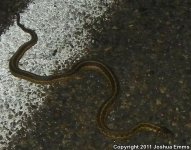
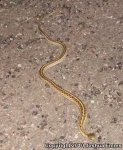
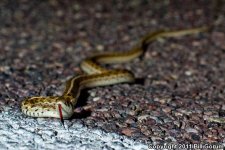
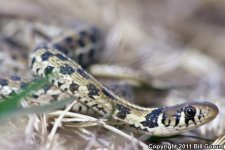
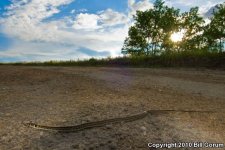
Click on a picture to see a larger version in a different window
| Range: |  |
| Subspecies: | Marcy's Checkered Garter Snake Thamnophis marcianus marcianus |
| Other Names: | Garden Snake, Gardener Snake, Grass Snake |
| Description: | A light yellow to orange middorsal stripe separates. Above light tan, or pale yellow body with a light cream or white middorsal stripe down the back . Has 2 paired alternating rows of black or brown spots down the sides. Belly white or bluish white. Scales are keeled. Adults are 13"-42" in length. |
| Similar Species: | Patchnoses and whipsnakes have smooth scales, a divided anal plate and no spots. The Common Garter has relatively larger eyes, generally 7 upper labial scales, a wide, yellow, vertebral stripe, often has red coloring between the lateral scales and usually a plain bluish gray belly. The Black-necked Garter has well defined neck blotches and a yellow to orange vertebral stripe. In the Plains Garter and Plains Garter the side stripe is on the 3rd and 4th scale rows. The Wandering Garter has the side stripe on the 3rd and 4th scale rows adn usually lacks a well-defined neck blotch. |
| Venom: | Garters were long thought to be nonvenomous, but recent discoveries have revealed that they do in fact produce a mild neurotoxic venom. Garter snakes cannot kill humans with the small amounts of venom they produce, which is comparatively mild, and they also lack an effective means of delivering it. They do have enlarged teeth in the back of their mouth, but their gums are significantly larger. The Duvernoy's gland of garters are posterior (to the rear) of the snake's eyes. The mild venom is spread into wounds through a chewing action. - Wikipedia |
| Habitat: | Chiefly a lowland river system snake of rivers, ponds, springs, and irrigation ditches in arid and semi arid regions. Habitats vary—desert, grassland, mesquite flats, chaparral covered hillsides, oak woodland and forests of pine and fir. Frequents permanent, intermittent streams and springs in the desert. |
| Behavior: | Diurnal in spring and fall, nocturnal in the summer. Can be seen during monsoons eating spadefoots. |
| Hibernation: | |
| Reproduction: | Breeds in early spring and is live bearing to 4-35 young. |
| Diet: | Feeds on frogs, toads, tadpoles, fish, salamanders, lizards, earthworms and small crustaceans. |
Sources:


